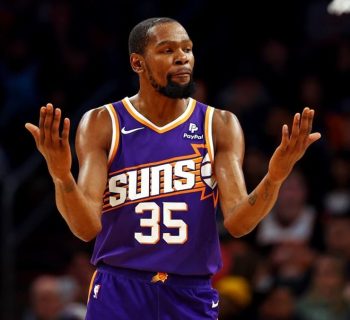NBA
Who Is The Rockets’ Brodric Thomas?
The NBA offseason was a whirlwind this year, to say the least. This is the first and, hopefully, only time that the draft, free agency and the start of training camp took place within a three-week period. But with all the roster movement. it can be hard to keep track of who is playing for each team – and, consequently, some smaller transactions were missed by fans.
One of the more intriguing storylines that fell through the cracks is that of Brodric Thomas, formerly of Division II Truman State, and his newly-minted status as a two-way player for the Houston Rockets. Naturally, those seemingly insurmountable odds were just the next step in a long and winding journey thus far for Thomas.
But Thomas comes from a basketball family – his sister Brittney played at Michigan State, where she made Big Ten honorable mention for four years, and both of his parents played college basketball. A late bloomer, he started two seasons at Bolingbrook High School in Illinois. After committing to Truman State, Thomas was on track to make an impact his freshman season when he hurt his hip and was forced to miss the season, using a redshirt year to save his eligibility.
The transition from high school to college was more challenging than just getting adjusted physically to playing basketball at a higher level. Thomas redshirted his first season and had academic trouble which put into question whether he would be eligible to eventually play at all. After meeting with the coaches, it would be best for him if he transferred to a junior college where he could work on his academics and get consistent playing time to help rehab his hip.
From there, he transferred to Southwestern Community College, a Division II JUCO located in Creston, Iowa – a place where he could not have been a better fit. During the 2016-17 season, he helped lead Southwestern to a 36-1 record, won the NCJAA Division II National Championship, was named MVP of the National Tournament and averaged 14.3 points while shooting 54.2 percent from the field and 40.3 percent from behind the arc.
After such a great season for himself and his team, Thomas had options to transfer back to a four-year school. But instead of chasing a Division-I offer, he chose to re-commit to Truman State.
Thomas went against the grain and showed loyalty to the program that had recruited him out of high school. Again, following successful sophomore and junior seasons, he would once more show his loyalty to the Bulldogs by playing his senior year with them instead of becoming a graduate transfer. Without a doubt, most players in his situation would have gone to a Power Five Division I school.
Somehow, eventually, it would pay off.
Last year, Truman State was given the No. 2 seed in Midwest Regional of the Division II NCAA Tournament. But before they could play a game, the tournament was cancelled due to COVID-19. Given the lack of an NCAA tournament, NBA Draft Combine and individual workouts at team facilities, it impacted no one more than Thomas.
NBA teams had Thomas on their radar, but without him playing against a higher level of competition other than Truman State, it was understandably difficult to improve his stock. During the interview process, he did well – kind, polite and just excited for the opportunity to sit down and talk to different teams. However, there is only so much to find in a Zoom interview – so, going into draft night, Thomas was not listed as a top 100 NBA prospect by ESPN, The Athletic, or any of the other major draft networks.
Even afterward, Thomas had significant competition to earn his two-way contract with the Rockets, even signing an Exhibit 10 contract along with Trevelin Queen, an undrafted rookie out of New Mexico State – and additionally needed to fight off Kenny Wooten, who was on a similar deal last season with New York Knicks. After competing in training camp, Houston converted his contract to a two-way deal.
But what type of player did the Rockets secure in Thomas? Due to several players having to sit out games due to COVID-19 protocols, Thomas has 18 total minutes over two games. Like a lot of rookies, fairly, Thomas is still getting adjusted to the strength and speed of the NBA.
In the past, Thomas has played as a combo guard, often allowing him to come off ball screens and make plays for others. But the best skill he has exhibited thus far is that his downhill passing ability – a skillset where he has reads to the roll, strong side, and weakside for skip passes. While he is far from a finished product, his athleticism, strength and basketball IQ are intriguing for a 6-foot-5 ball handler that is still growing as a basketball player.
In an unconventional year, Thomas’ unique, inspiring story shows how hard work, commitment and character can pay off. Houston should be credited for giving him a chance to make the roster and, in a shortened training camp with no summer league, not using school size bias while making their decision.













